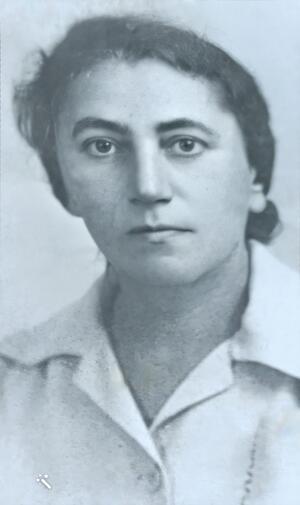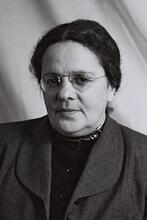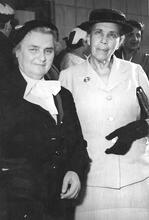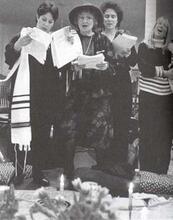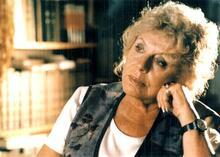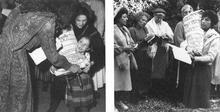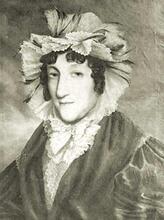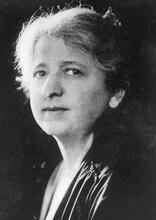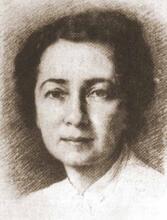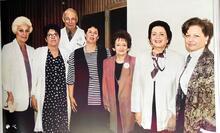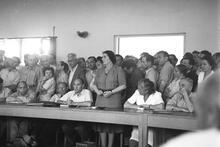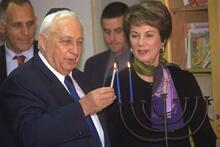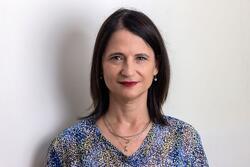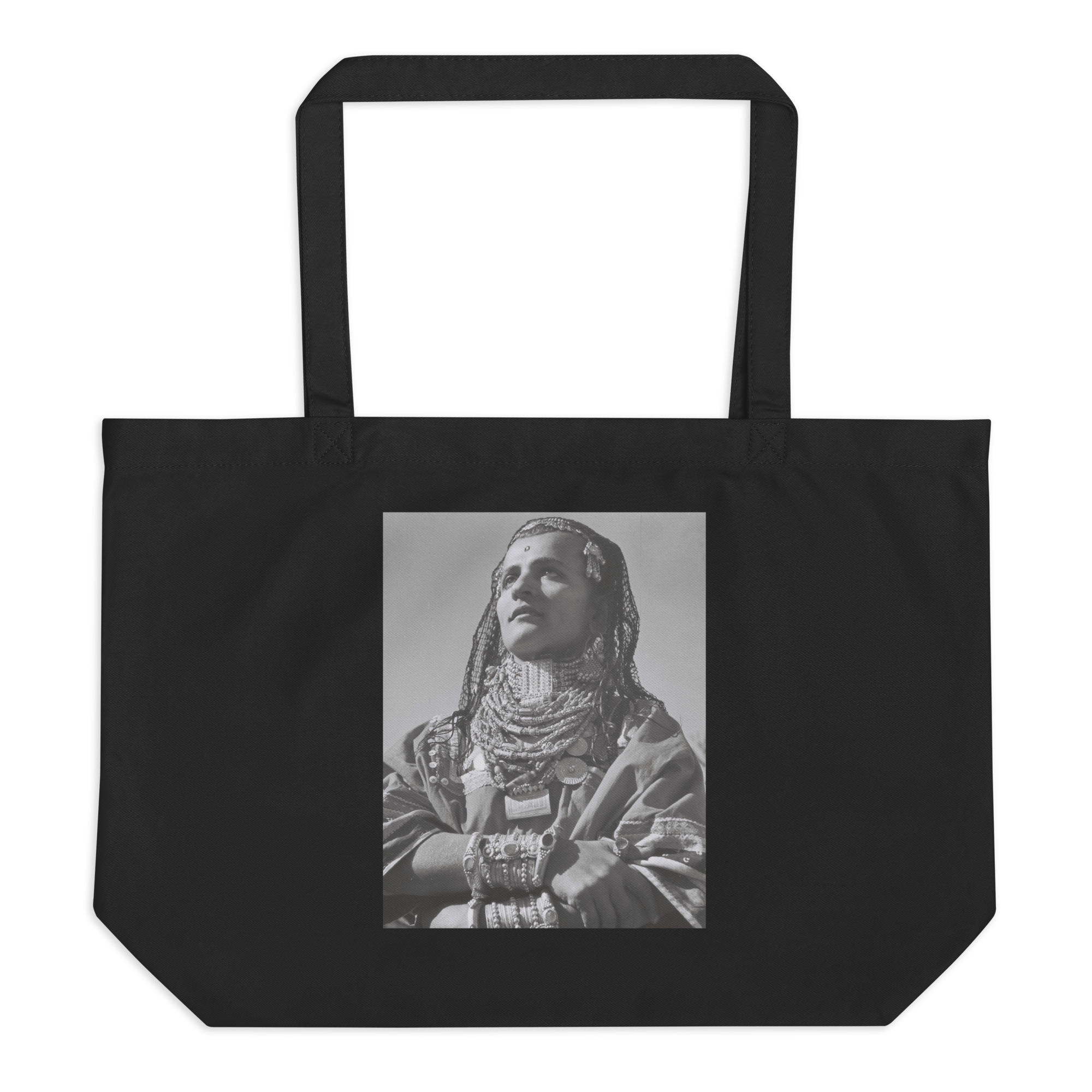Miriam Shtarkman-Verlinsky
Miriam Shtarkman-Verlinsky was born in Zhmerynka, in modern-day Ukraine, in 1904. In her young adulthood, she dedicated herself to Zionist youth movements and eventually began working in the underground to facilitate immigrations to the Land of Israel. She was arrested but her sentence was ultimately commuted to deportation to the Land of Israel. There, she worked to assist Prisoners of Zion and ultimately sought a law degree. She became the seventh woman to become a certified lawyer in Mandate Palestine, the second female judge, and, in 1953, the first female Chief Magistrate in Haifa. Throughout her life, Shtarkman-Verlinsky advocated for Zionism and the rights of women and was known for her fierce dedication to justice.
Miriam (Mina) Shtarkman-Verlinsky held the distinction of being the seventh female lawyer admitted to the bar in Mandate Palestine. Her career further broke ground when she was appointed as the second female judge in the nation and the second to serve in the city of Haifa. She also became the first woman to hold the position of Chief Magistrate of a Magistrate's Court. Beyond her legal achievements, Shtarkman-Verlinsky was a dedicated Zionist activist, recognized as a Prisoner of Zion (Jews who faced imprisonment or exile because of their Zionist beliefs and actions in nations where such expression was outlawed), and a fervent advocate for women's rights. As the press described her in the late 1950s, she was “A small woman, simple in appearance and manners, whose facial expression is a mask of sternness—she is the one in charge here of the machinery of justice. She is: Her Honor the Judge, the Chief Magistrate...” (Dolev, 1959).
Early Life and Zionist Activities
Miriam Shtarkman-Verlinsky, daughter of Yitzhak, a carpenter, and Feige Shtarkman, was born in the city of Zhmerynka (now in Ukraine) on June 16, 1904, in a home that was a Zionist center. She had three siblings, Shulamit (who married Miriam’s husband’s brother), Israel Aba, and Rivka.
Miriam Shtarkman completed her studies at the local gymnasium and enrolled in law studies in Kyiv. In 1922, she was involved in Zionist activities within the framework of “Tze'irei Zion” and “HeHalutz.” Tze’irei Zion, or Youth of Zion, was a Zionist youth movement dedicated to spreading Zionist thought and inspiring young people to make immigrant to the Land of Israel; HeHalutz was a Zionist organization with the goal of immigration to the Land of Israel, including by establishing training kibbutzim before immigration. She was arrested for her activities but released without trial. Due to this activity, she was denied the right to study law at the University of Kyiv.
In 1923, Shtarkman-Verlinsky was tasked with the clandestine activities of “HeHalutz” branches across Ukraine, operating under a false passport to facilitate immigration to the Land of Israel. Her underground work led to her arrest, resulting in a sentence of exile to the White Sea region of Russia. When she was denied the customary 48 hours to prepare before deportation, she initiated a hunger strike. In 1925, she arrived at her place of exile, where she was detained for a year and a half. She ultimately had her sentence commuted to deportation to the Land of Israel, though her passport carried a warning of life imprisonment upon any return.
Immigration to the Land of Israel and Legal Studies
In October 1926, Shtarkman-Verlinsky immigrated to the Land of Israel and settled in Tel Aviv. She found employment as the coordinator of the Working Women's Bureau. Her commitment to “Tze'irei Zion” and “HeHalutz” in the Soviet Union continued. She was among the early activists in the “Magen” association, dedicated to aiding Prisoners of Zion. She also co-authored a book with Benjamin West chronicling the history of “HeHalutz” in Russia.
Shtarkman married Benjamin Verlinsky, himself a former Prisoner of Zion, most likely in 1926. The couple relocated to Haifa for Benjamin’s job. Their only daughter, the late Avital Verlinsky, later noted that their home differed from others she knew, with her father sharing in traditionally maternal roles. Within their social circle, largely composed of fellow immigrants from the same wave, Shtarkman-Verlinsky's esteemed profession was respected and appreciated.
Shtarkman-Verlinsky pursued her legal education at the Mandatory Law School (known as the Law Classes) in Jerusalem, financing her studies by cleaning houses. From 1935 to 1937, she also served as an intern at the Haifa law firm of Nahum Hat and Dov Tovbin. According to her daughter, her pursuit of justice and desire for law and order fueled her interest in law. She completed her studies in April 1937 and on November 22, 1937, she received her certification (license number 559), becoming the seventh female lawyer in Mandate Palestine.
Following her certification, Shtarkman-Verlinsky worked in the office of Adv. Pinhas Margolin, one of the first lawyers in Haifa, and made her first court appearance in Haifa in a civil lawsuit. Her legal practice focused on civil litigation, particularly family law. She vividly recalled her first case, where an “old Haifa resident” approached her after the hearing, expressing surprise that a woman like her would dare to address a judge in such a manner. Shtarkman-Verlinsky retorted, “And what do you think, sir, that women are not human beings? They too are allowed to speak to a judge! Times have changed” (Dolev, 1959; Shavit, 1960).
Feminism
Shtarkman-Verlinsky's dedication to feminism and the defense of women was profound. As early as the 1930s, she delivered lectures to women on their legal status in the Land of Israel. She served on the committee of the Eretz Israel Workers' Party branch (1930) and represented the Working Women's Committee in the founding of the “WIZO Workers” organization. In Haifa, she established a legal advice bureau for women at the Workers' Council and served as the council's legal advisor. She was also a member of the Union of Hebrew Women for Equal Rights in Erez Israel and one of the first women to present cases before the rabbinical courts. Her service as a judge in the Mishpat Hashalom Haivri (Hebrew Law of Peace; a judicial system or arbitration body for deliberations on civil matters between Jewish litigants in the Jewish community in Palestine prior to the establishment of the State of Israel. "Old Yishuv" refers to the Jewish community prior to 1882; "New Yishuv" to that following 1882.Yishuv) during the Mandate period significantly contributed to the acceptance of female judges after the establishment of the State. In 1949, she actively participated in submitting a bill to amend the Marriage and Divorce Law within the First Knesset, maintaining her interest in the issue even after her judicial appointment.
Judicial Career
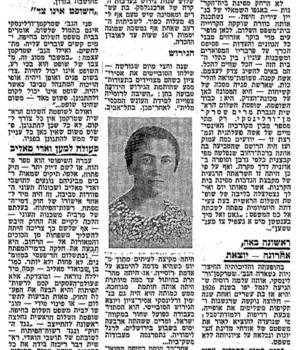
News article about pioneering Israeli woman jurist Miram Shtarkman-Verlinsky, Maariv, August 14, 1959. From the Historic Jewish Press website www.JPRESS.org.il, established by the National Library of Israel and Tel Aviv University, Maariv.
As a member of the Union of Hebrew Women for Equal Rights, Shtarkman-Verlinsky was also involved in the initiative to appoint female lawyers as judges after the establishment of the State. In 1950, she was appointed a magistrate judge in Haifa, becoming the second female judge in the State of Israel and the second in Haifa.
In 1953, Shtarkman-Verlinsky achieved another milestone by becoming the first woman in the State of Israel to be appointed Chief Magistrate. Her primary judicial focus was criminal law, and she presided over numerous high-profile cases that garnered significant media attention, including the libel and incitement trial of the editors of the “Al Ard” newspaper, an unlicensed weekly newspaper published by a far-left Arab political movement that operated in Israel from 1959 to 1965, as well as other cases deeply rooted in Haifa's local context. She was not infrequently subjected to threats and violence during her tenure.
Known for her exceptional diligence, Shtarkman-Verlinsky voluntarily included herself in the after-hours duty roster. Her daughter remembered that her mother “took her work personally and often brought work home,” although she rarely discussed work matters with her family. In one case, she traveled to Jerusalem to save the marriage of a police sergeant by intervening witih a supervisor to overcome bureaucratic obstacles the couple was facing in their attempt to adopt a child. She also approached the then-mayor of Haifa, Abba Hushi, a family friend, to help resolve a neighbor’s dispute. Avital Verlinsky concluded, “When Mom decided to help, the sky was the limit.” A contemporary article highlighted this aspect of her character: “Many...see her only as the stern judge...and few know about her actions...to help those afflicted by fate, who are brought before her for trial. Often, she does not suffice with writing the verdict but rather activates various institutions and factors to help rehabilitate the person whose circumstances...brought him to the defendant's bench.” A notable example was her refusal to order the eviction of impoverished new immigrants sought by the Development Authority (Shavit, 1960).
One particular event cast a shadow over Shtarkman-Verlinsky’s judicial career. In 1959, demonstrations and riots erupted in the Wadi Salib neighborhood of Haifa, made up mostly of Lit. "Eastern." Jew from Arab or Muslim country.Mizrahi immigrants, protesting against ethnic discrimination by Ashkenazi Jews and the establishment. Those arrested were brought before Judge Shtarkman-Verlinsky. A contentious exchange between the judge and the detainees led to severe criticism and accusations that Shtarkman-Verlinsky exhibited contempt for the detainees when she stated, “I will not tolerate people who come before me being labeled as Moroccans” (Badad, 1959). Apprantly, Shtarkman-Verlinsky viewed the protesters' words as sowing division among the people. The protesters interpreted the judge's words as “hatred of Moroccans.” The detainees refused to be tried by her, and a request for her disqualification was submitted to the Supreme Court. Ultimately, she decided to preside over the trial with a panel of three judges, with herself at the head. Shtarkman-Verlinsky was deeply hurt by the accusations of racism, feeling unable to defend herself.
Shtarkman-Verlinsky was seen as a strict judge. This perception may have contributed to a deterioration in her relationship with the lawyers appearing before her in the mid-1960s, following complaints that she “hurled insults at them in the presence of the public” (Lev, 1967). The situation escalated to the point of a threatened petition to the High Court of Justice. Calls for a boycott of the judge were opposed by the Attorney General and other Haifa lawyers. Ultimately, through the intervention of the Minister of Justice and representatives of the Bar Association, a compromise was reached, resulting in Shtarkman-Verlinsky's transfer to the position of Chief Magistrate for civil matters. Some time later, she returned to hearing criminal cases. She was also temporarily appointed as a judge of the Haifa District Court, filling in for a judge serving on a public committee.
Shtarkman-Verlinsky retired in 1974. A modest ceremony was held at the courthouse to mark her retirement. Even after her retirement, her strong work ethic was evident as a backlog of cases began to accumulate: “[She] alone ‘eliminated’ about 60 percent of all criminal cases that piled up in the Haifa Magistrate's Court” (Zohar, 1974).
Miriam (Mina) Shtarkman-Verlinsky passed away on September 21, 1980, leaving behind a legacy as a pioneering woman in the Israeli legal system and a dedicated advocate for justice and equality.
Interview with Avital Verlinsky, daughter of Miriam Shtrakman-Verlinsky, September 16, 2005.
Interview with Miriam Shtrakman-Verlinsky, Oral Documentation Department, Institute of Contemporary Jewry, The Hebrew University, September 18, 1966.
Central Zionist Archives J75/36, "Proposed Amendment to the Personal Status Law in Israel, by Adv. Mania Shtrakman."
"A Woman – Advocate in Haifa." Haaretz (January 18, 1938): 5; "A Woman Among the Lawyers." Davar (January 19, 1938): 6.
"Among WIZO Workers." Haaretz (March 31, 1931).
"Arrest Warrants Issued for Investigation Against 28 Suspects in Attempted Sabotage Near the Circus." Davar (July 27, 1969): 14.
"At the End of About Twenty-Five Years." Davar (June 17, 1974): 4.
"At the Tel Aviv Workers' Party Branch." Davar (January 20, 1930): 4.
Badad, Y. "This is How 59 Arrest Warrants Were Issued in Haifa." Herut (August 7, 1959): 2.
"Chairman of the Haifa Peddlers' Association Suspected of Accepting Bribes for Licenses." Herut (October 2, 1959): 18.
Dolev, Aharon. "Judge Miriam Shtrakman." Maariv (August 14, 1959): 2.
Ezrieli, Y. "The Trial of Ben-Harush and His Associates Before Three Judges." Hatzofe (August 17, 1959): 4.
"Haifa." Davar (December 22, 1936): 5.
"Haifa Lawyers Warned Against Boycotting Judge Verlinsky." Maariv (October 11, 1966): 1.
"Haifa Lawyers Will Consider Canceling Their Proposal to Act Against a Judge." Maariv (January 21, 1967): 8.
Harlap, Amiram. Legal Life in Haifa During the Mandate and the Establishment of the State. Haifa: The Author, 2001.
"Judge Refused to Sit in Judgment Because of Her Membership in the Histadrut." Hayom (Tel Aviv) (June 19, 1968): 6.
Katvan, Eyal. "'No Longer 'Decorative Parsley’: The Entry of Women into Judicial and Prosecutorial Roles in Eretz-Israel and the State of Israel." Iyunei Mishpat 32 (2010): 69.
Katvan, Eyal. "'Women in a Man's Robe': The Path of Integration of Women in the Legal Profession in Eretz Israel and the State of Israel." Iyunim Bitkumat Israel (Gender in Israel) (2011): 263.
Katvan, Eyal, Ruth Halperin-Kaddari, and Tamar Trau-Zitnitski. First Women Lawyers in Pre-State Israel, 1930-1948. Bar-Ilan University - Yaacov Herzog Faculty of Law, 2009.
Lev, Yigal. "Judge 'Succumbed' to Pressure from Lawyers After Tension Between Them." Maariv (March 30, 1967): 8.
"Obituary Notice." Maariv (September 22, 1980): 14.
"On Problems of Personal Status Laws in the Country." Davar (August 13, 1958): 5.
"Outburst Against a Judge." Hatzofe (December 19, 1952): 8.
Palestine Gazette 779 (May 5, 1938): 473, 484.
"Rioted and Attacked a Judge." Hatzofe (November 8, 1957): 8.
Shavit, Yosef. "Judge Shtrakman." Davar (June 17, 1960): 4.
Stern, Bat-Sheva Margalit. “Does Justice Have a Gender?” https://schechter.edu/does-justice-have-a-gender/
"Successful Eviction Claim." Haaretz (August 21, 1942): 5.
"Testimony." HaOlam HaZeh 1142 (August 19, 1959): 5.
"The Parrot 'Yossi' Doesn't Want to Sing." Maariv (February 14, 1973): 3.
"The Tragedy of Eighty Families from Haifa." Sha'arim (January 22, 1959): 2.
"The Trial of Ben Harosh and His Associates Was Halted Until the Supreme Court Decides Whether to Transfer It from Haifa." Hatzofe (August 11, 1959): 4.
"Two New Magistrates in Haifa." Herut (February 15, 1950): 4.
West, Benjamin, and Miriam Shtrakman. The Pioneer in Russia: The History of the Illegal (National-Labor) Pioneer. Tel Aviv, 1932.
“Woman Advocate Called to the Bar.” The Palestine Post (November 28, 1937): 2.
"Yitzhak Shtrakman, of Blessed Memory." HaBoker (June 30, 1961): 5.
Zohar, David. "Haifa Suffers from a Shortage of Judges, Courts Are Piling Up Cases." Maariv (July 17, 1974): 15.
"180 Criminals in One Day." Davar (October 29, 1963): 5.
